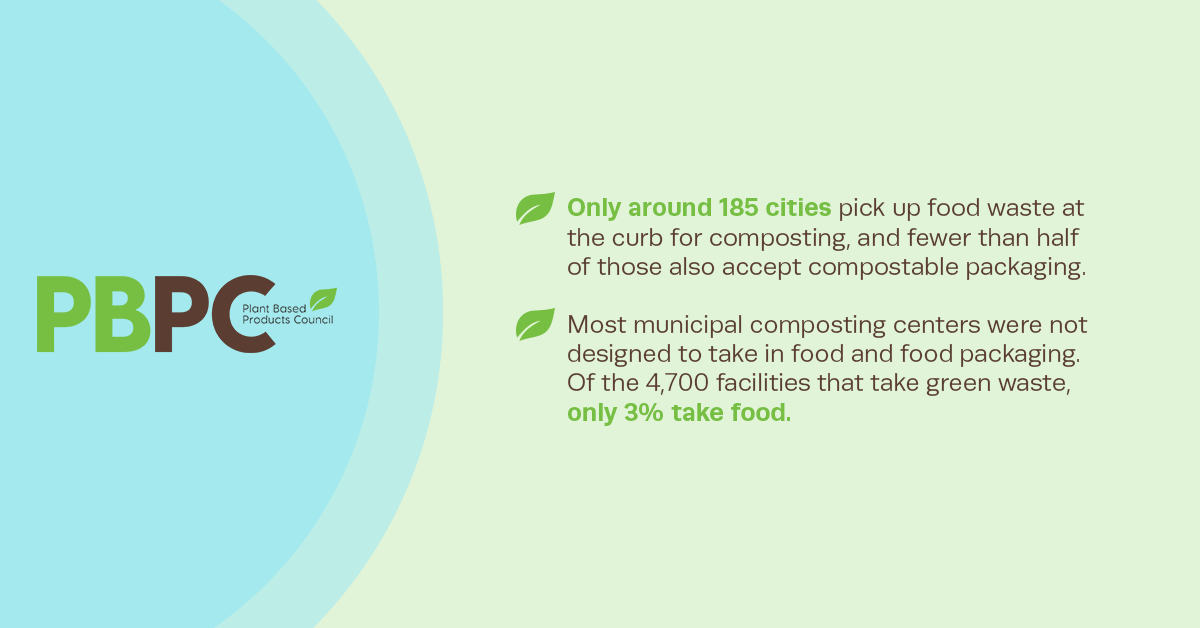10/4
On Fast Company and Composting, Let’s Lead with the Good News
Articles like this one in Fast Company do an admirable job of giving readers an overview of the current state of efforts to move beyond landfills and expand access to compostable, lower-carbon-footprint materials, especially in food service packaging.
But like so much of the coverage of these issues, the Fast Company article can overemphasize the negatives, at times framing efforts to move toward compostable materials as somehow insincere or noncommittal, rather than presenting it as what it is: a good-faith effort that is encountering the kind of challenges you’d expect to face with such an ambitious and evolutionary project.
Here’s a telling passage from the piece:
In a home composter or backyard pile, fruit and vegetables can break down easily. But a backyard bin likely won’t get hot enough to break down compostable plastic, like a bioplastic takeout box or fork made from PLA (polylactic acid), a material produced from corn, sugarcane, or other plants. It needs the right combination of heat, temperature, and time—something that’s likely to happen only in an industrial composting facility, and even then only in some cases. Frederik Wurm, a chemist at the Max Planck Institute for Polymer Research, has called PLA straws “a perfect example of greenwashing,” since if they end up in the ocean, they won’t biodegrade.
To claim that PLA straws are “greenwashing” is to impugn the intentions of the companies that have invested time and resources into developing more environmentally responsible alternatives. The reality is that we are committed to innovations like PLA straws both because that’s what our customers demand of us, and because it’s the right thing to do.
Our industry has never been less than forthright about both the promises of these new technologies and the challenges they currently face. PLA straws represent a major improvement on legacy materials when it comes to carbon footprint, however the nation’s waste management systems are not yet fully geared for or designed for circularity. The next step in this case is to expand the infrastructure necessary to maximize the many benefits compostable materials offer.
Fast Company gets this. They point out, among other facts, that:
- Only around 185 cities pick up food waste at the curb for composting, and fewer than half of those also accept compostable packaging.
- Most municipal composting centers were not designed to take in food and food packaging. Of the 4,700 facilities that take green waste, only 3% take food.
- There are still a lack of agreed standards for identifying packaging that is actually compostable, and consumers don’t always understand the distinctions or dispose correctly.
- “Robust infrastructure will take more funding, and new regulations, he says. When cities pass bills that require phasing out single-use plastic—and allow for exceptions if packaging is compostable—they’ll have to make sure that they have a way to collect those packages and actually compost them.”

This last point is especially critical. While composting waste is more economical than landfilling, the start-up costs to establish a new facility, or expand an existing one, can be a barrier to entry. According to the 2017 Washington DC compost facility feasibility study conducted by Resource Recycling Systems, a new 10-20 acres composting facility, capable of processing 150,000 tons of waste, can cost anywhere from $7-11 million depending on the siting requirements and other factors. So, in order to advance composting activity in the United States, there is a significant need for robust investment into composting infrastructure.
That’s why we at the Plant Based Products Council are advocates for rapidly developing the nation’s composting capacity and infrastructure, through grants, financing, or private-public partnerships or other means. Such a program would assist eligible entities in implementing strategies to divert compostable municipal waste from landfills to value-adding composting facilities that will create jobs and a product that can be used to improve soil health, water quality, carbon storage in soil, and reduce fertilizer needs.
The technology for a compostable future, built on sustainable alternatives to legacy plastics, is already a reality. And we continue to make strides every day. The only thing missing is the kind of infrastructure, and the educated consumers and communities, required to realize the great opportunity before us.
